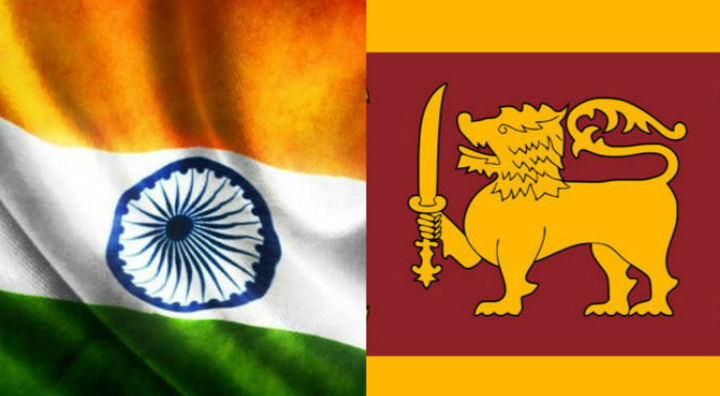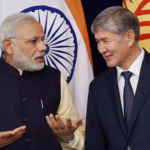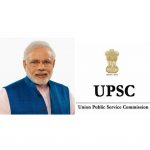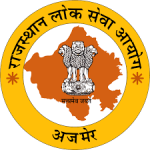India-Srilanka relations
Brief History and Background of India-Srilanka relations (Read in Hindi)
- India is Sri Lanka’s only and closest neighbour separated by the Palk Strait.
- The two countries share a relationship of over 2500 years sharing a legacy of intellectual, cultural, religious and linguistic intercourse.
- Both countries have generally shared an amiable relationship but were controversially affected by the Sri Lankan Civil War and by the failure of Indian intervention during the war.
- Both nations occupy a strategic position in South Asia and have sought to build a common security umbrella in the Indian Ocean.
- Historically and culturally, the two nations have been considerably close, with 70% of Sri Lankans continuing to follow Theravada Buddhism to this day.
- In recent years Sri Lanka has moved closer to China, especially in terms of naval agreements. India has signed a nuclear energy deal to improve relations.
- Buddhism was introduced into Sri Lanka in the 4th century BCE by Venerable Mahinda, the son of Indian Emperor Ashoka, during the reign of Sri Lanka’s King Devanampiya Tissa.
- During this time, a sapling of the Bodhi Tree was brought to Sri Lanka and the first monasteries and Buddhist monuments were established.
- Among these, the Isurumuni-vihara and the Vessagiri-vihaara remain important centres of worship.
- Ashoka is also credited with the construction of the Pathamaka-cetiya, the Jambukola-vihara and the Hatthaalhaka-vihara, and the refectory.
- The Pali Canon, having previously been preserved as an oral tradition, was first committed to writing in Sri Lanka around 30 BCE.
- With the Sangha having existed in a largely unbroken lineage since its introduction in the 4th century, Sri Lanka has the longest continuous history of Buddhism of any Buddhist nation.
- For most of the Tamils in Sri Lanka, their ancestors were from India.
Bilateral Trade
- Both countries are member nations of several regional and multilateral organisations such as the South Asian Association for Regional Cooperation (SAARC), South Asia Co-operative Environment Programme, South Asian Economic Union and BIMSTEC.
- A bilateral free trade agreement was signed and came into effect in 2000 between India-Sri Lanka.
- Since then bilateral trade rose 128% by 2004 and quadrupled by 2006, reaching US$ 2.6 billion.
- Indian exports account for 14% of Sri Lanka’s global imports.
- India is also the fifth largest export destination for Sri Lankan goods, accounting for 3.6% of its exports.
- Both nations are also signatories of the South Asia Free Trade Agreement (SAFTA).
- The year 2010 is predicted to be the best year for bilateral trade on record, with Sri Lanka’s exports to India increasing by 45% over the first seven months of the year.
- In 2011, India’s exports to Sri Lanka amounted to US $ 4.3 billion, which is an increase of about 75% compared to 2010.
- Bilateral trade in 2012 amounted to US$4.002 billion, registering a decline of 17.59% as compared to corresponding period of 2011.
- Our main investments are in the areas of petroleum retail, hospitals, telecom, vanaspati, copper and other metal industries, real estate, telecommunication, hospitality & tourism, banking and financial services, IT and food processing (tea & fruit juices).
Ocean and Fishing Disputes
- There have been several questionable happenings of Sri Lankan Navy personnel firing on Indian fishermen fishing in the Palk Strait.
- The issue has emanated because of Indian fishermen using mechanised trawlers which strip the Sri Lankan fishermen including Tamils off their fish-catch.
- These mechanised trawlers are also damaging their fishing boats and ecology.
- The Sri Lankan government wants India to ban the use of mechanised trawlers in the Palk Strait region.
- Indian Government has always sought the safety of Indian fishermen on a priority basis with Sri Lankan Government.
- On January 20, 2011, India officially protested against Sri Lanka Navy for its alleged involvement in attacks on Indian fishermen.
- Even after the official protest, another fisherman was killed in a brutal manner on Jan 22, 2011.
- Over 730 fishermen have been killed in the last 30 years.
- The dispute between the two countries is complicated by domestic political factors in India.
- A majority of Indian fishermen caught fishing illegally in Sri Lankan waters are ethnic Tamils from the southern Indian state of Tamil Nadu and argue that the waters claimed by Sri Lanka have historically been exploited by Tamil fishermen.
Latest Developments in India-Srilanka relations
- India and Sri Lanka held talks to find a long-lasting solution to the issue of fishermen.
- India acquiesced to drop out the use of mechanised trawling, mainly used by fishermen from Tamil Nadu in a graded time-bound manner.
- Sri Lanka is yet to consider the request from Indian side to immediately release the fishing vessels in each other’s custody.
- Both countries have also to set up a Standard Operating Procedures (SOP) to release the fishermen in each other’s custody.
- Both countries have agreed to set up a Joint Working Group (JWG) on Fisheries and hotline between their Coast Guards to address the long existing issue of fishermen from Tamil Nadu.
- The JWG will meet every three months beginning January 2017.
- On the other hand, Ministers of Fisheries would meet every six months along with Naval representatives and Coast Guard to discuss the protracted issue.
- Both countries have asserted to contrive procedures for returning fishermen arrested by both sides.
- At the same time, both sides failed to resolve the issue of their seized boats which has been an emotive issue in Tamil Nadu.











